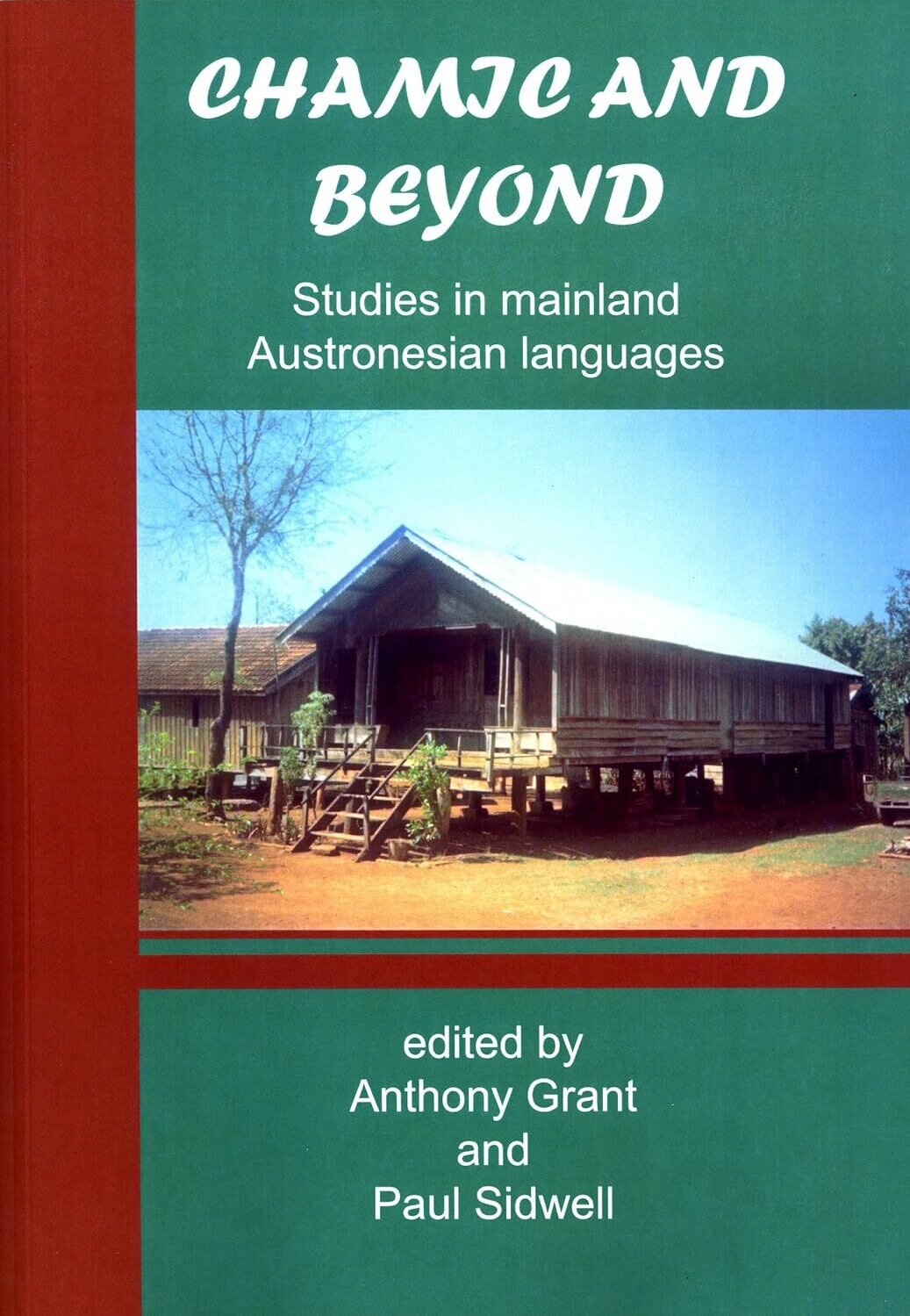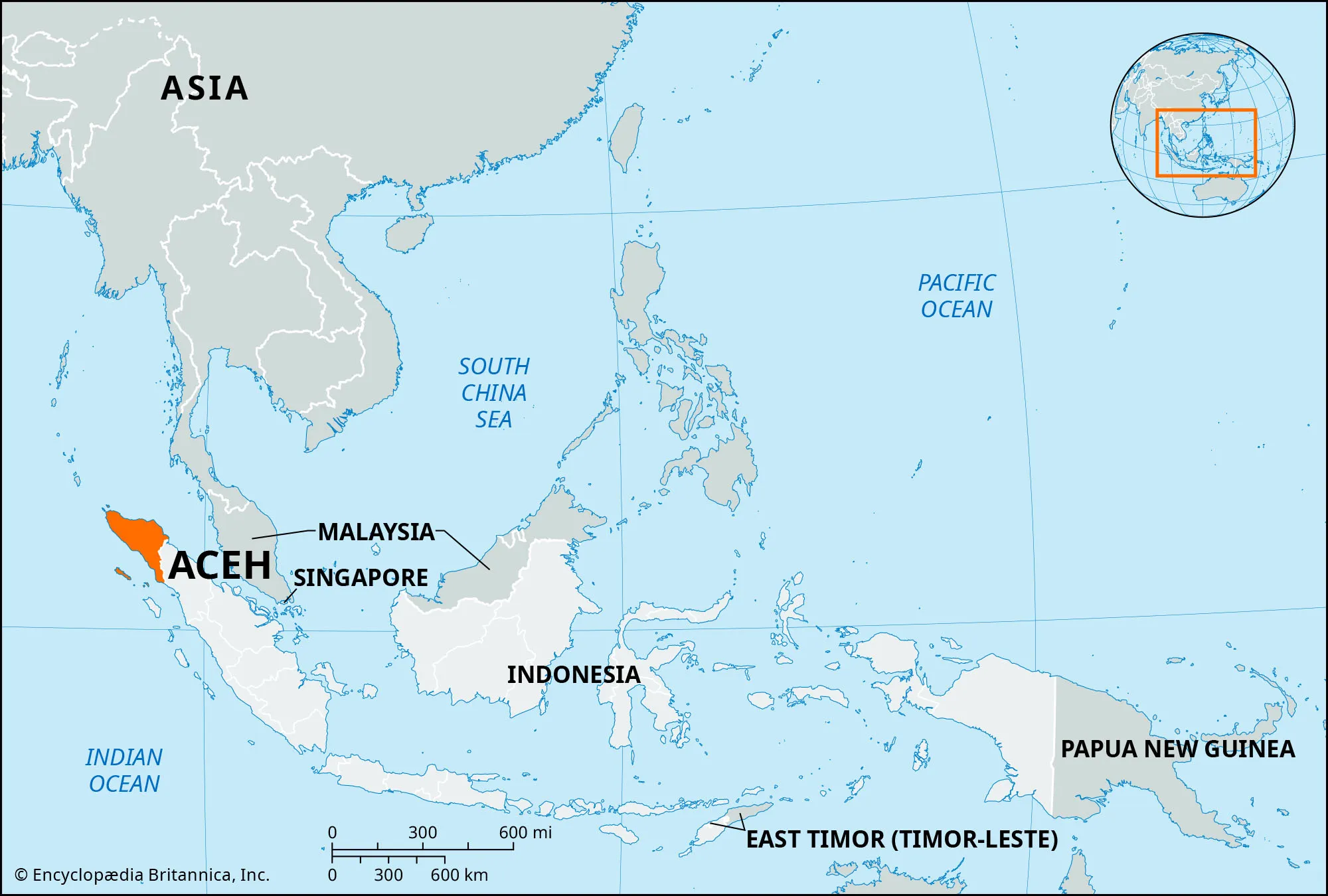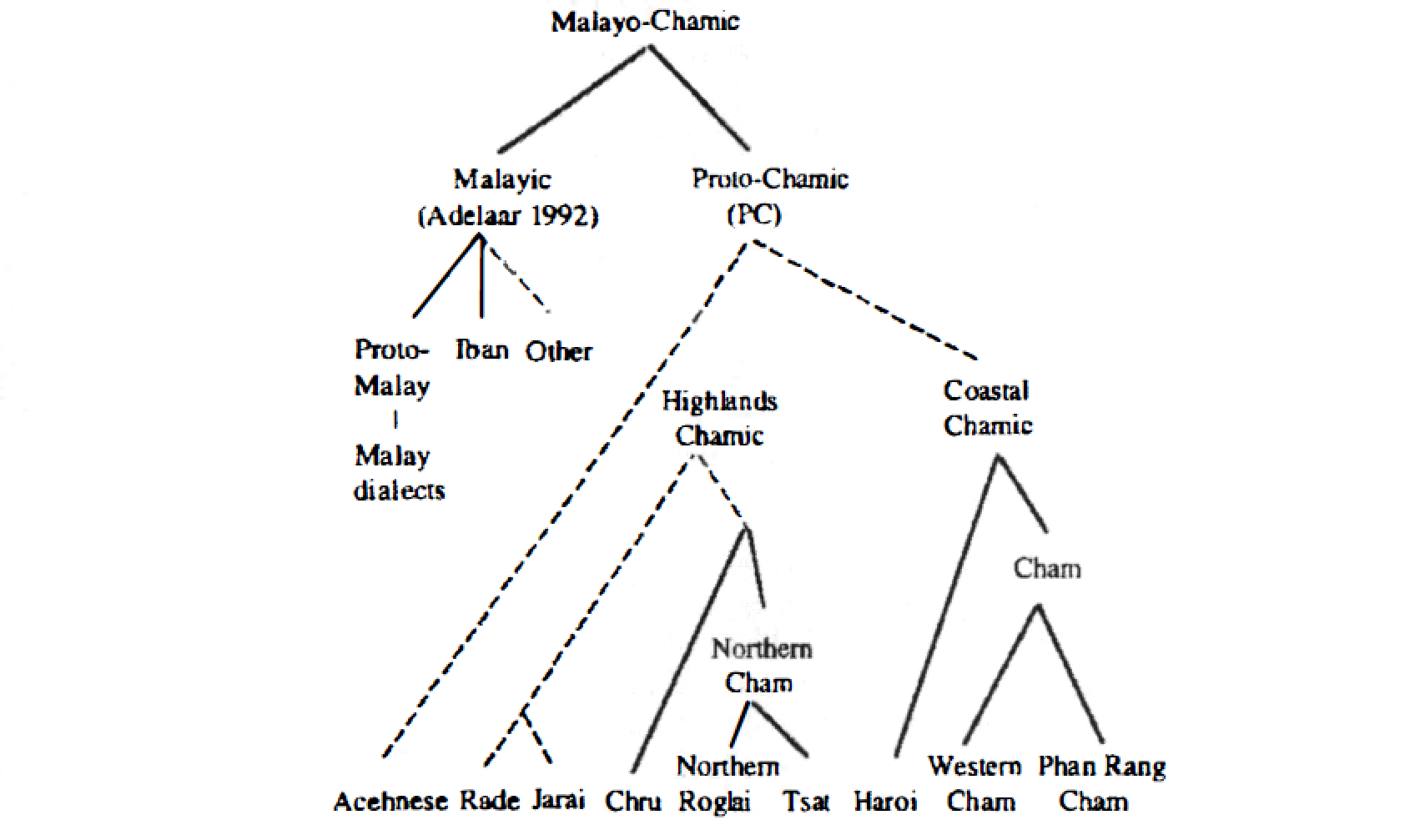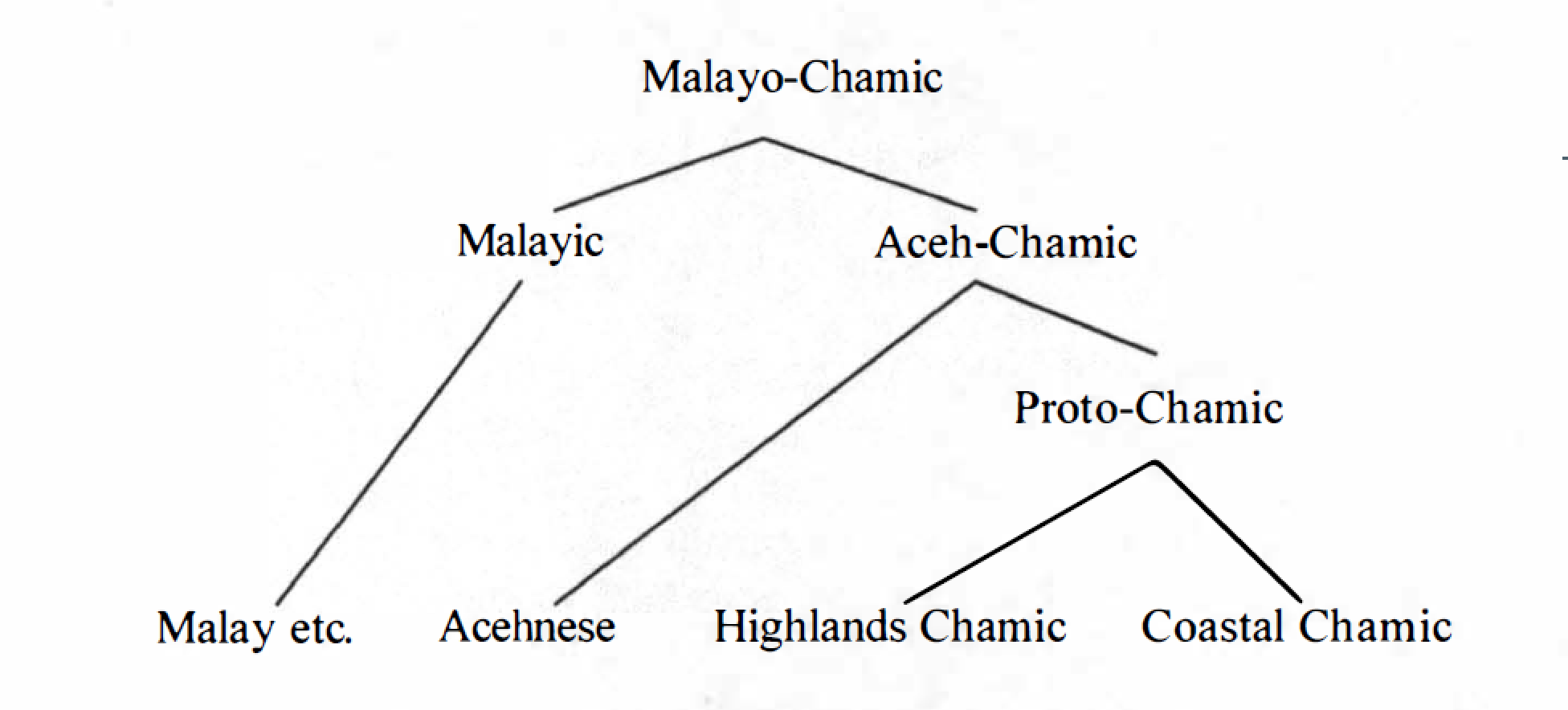Chamic and Beyond: studies in mainland Austronesian languages
by Paul Sidwell & Anthony Paul Grant
How linguistics can help refine our perspective on Champa and other ancient Kingdoms of Southeast Asia.

Type: e-book
Publisher: Pacific Linguistics, ANU, Canberra | ed. Anthony Paul Grant & Paul Sidwell
Edition: ANU Digital Collection
Published: 2005
Authors: Paul Sidwell & Anthony Paul Grant
Pages: 290
ISBN: 08 5883561 4
Language : English
ADB Library Catalog ID: eLING24
No matter what, Funan remains the huge conondrum at the center of Ancient Southeast Asia history, and this study brings new perspectives on the elusive polity or kingdom. Which language the Funan people speak? And what if Aceh, the Sumatra ethno-linguistic group, migrated from Funan and Champa, reversing the common notion that Indonesian-based ethnic groups landed in mainland Southeast Asia, in the Mekong Delta area that used to be part of Cambodia?
From the study (not including the purely linguistics discussions):
- “The split from Proto-Malayic and the move of the speakers of the language which was going to become Cham from Borneo to South East Asia predates the Christian era by maybe a couple of centuries, though we cannot be sure. Champa, the Cham kingdom in what is now Vietnam, which was characterised by its Mahayana Buddhism-influenced Hindu religion and its written language using an Indic alphabet, was first mentioned by Chinese chroniclers in 192 AD; they referred to it as Lin- Yi, though the Cham name was Lemap. At the time of its greatest extent, Champa stretched from the Vietnamese coast around Danang to the top of the Mekong Delta, encompassing portions of modem northeastern Cambodia and the parts of Laos as far as Pakse. To the south of this area was the Funan empire, the linguistic identity of which (Austronesian, Austroasiatic or otherwise) is still unknown. The first inscription in Cham, a bilingual stone which is also inscribed in Sanskrit (but with both inscriptions written in Cham script) and coming from Tra-Kieu in Vietnam, apparently dates from c. 350 AD. But most of the 75 or so Cham inscriptions date to the 9th century or after, a period of stele-inscription starting with the Sixth Cham Dynasty. The northern Cham kingdom crumbled in the period beginning in 982 under the impact of Vietnamese attacks, at which point the Acehnese speakers’ ancestors headed south via the Malay Peninsula. At this time they were speaking a language which had already absorbed a considerable number of Mon-Khmer lexical items (though its relatives remaining in Indochina were to absorb far more) and which had adopted the Mon-Khmer syllabic pattern. However, the influence of Mon-Khmer languages upon the Chamic languages which remained in situ was exacerbated in the coming millennium as the power of the Chams declined. Relations between the various groups in Indochina were not peaceful: in response to repeated Khmer attacks on Champa, Thais supported by Chams eventually destroyed Angkor in the 1 5th century. The southern Cham kingdom, with its capital at Vijaya, was crushed by the Vietnamese in 1471 , a couple of centuries or so (we believe) after Islam came into the area. Meanwhile the speakers of Tsat went northeast to Hainan, where they now live near Sanya City. It is possible that the speakers of Tsat, the Utsat, were not yet Muslims when they reached Hainan Island, although we cannot be sure. (It seems likelier that they were Cham merchants who had embraced Islam.) Nor can we be certain of that. Tsat’s . presence on Hainan is · the result of a single migration from the mainland; there may have been two, one around the 1 1 th century or maybe earlier, and one a few centuries later (Pang 1 998, Thurgood 1 999: 2 1 2 – 232).
- “Round about this time, or at least at some time between 1403 and 1511, a Chinese glossary (reproduced and discussed in Edwards and Blagden 1 940- 1 942) listed about 500 Cham words and phrases, using Chinese characters to write them. Edwards and Blagden took the Cham equivalents from the dictionary of Written Cham by Aymonier and Cabaton (1906). This document demonstrates that there were quite a few words from MonKhmer languages which were already in use in the Cham language at this time. Indeed the mix of Malayic, Mon-Khmer and obscure elements in this vocabulary has remained stable, and it is broadly similar to that which is found in modem speech: the same ideas which are expressed in this document by words of Mon-Khmer origin are expreseed likewise in modem Cham, and there has been little if any further relexification of basic Cham vocabulary.”
- “Well after the separation of Acehnese there were other phases of significant MK influence upon Chamic, principally by Khmer, Mon and Vietnamese. Probably much of it was associated with historical events that led to the decline of Champa and the differentiation of Chamic into Coastal and Highland branches. The earliest and later contact phases must have been quite separate, as we fmd no identifiable traces of the oldest loan stratum exist elsewhere beyond mainland Chamic and the Mon-Khmer languages of the Annamite Range that came under strong Chamic influence. We may speculate that some great historical event, perhaps a great political conquest, saw a foreign population absorbed completely into the nascent Champa, leaving no direct ancestor elsewhere in Indo-China. Alternatively the substratum may simply have been the language of the autochrones of the Indo-Chinese coastal plains that were first encountered, and then absorbed, by pre-Aceh-Chamic settlers. My [Paul Sidwell] favoured speculation is that we might connect the more obscure lexical stratum in Chamic with the mysterious kingdom of Funan, an ally of early Champa that was ovetaken by the pre-Angkorian Khmer Chenla (Zhenla) around the middle of the first millennium. I dare not pretend to have positively identified the “language of Funan”-presumably the name refers only to the political centre that ruled over an ethnically complex region-but one can claim at least to have identified a specific line of investigation.”
- “I suggest that it is appropriate to build upon the solid foundation of Thurgood’s [Graham Thurgood, 1999] data and analyses by drawing in more extensive sources, especially Mon-Khmer, to rework the reconstruction of the respective phonologies and lexicons of Proto-Aceh-Chamic and Proto-Chamic. A more extensive etymological compilation and stratification of the lexicon offers prospects for revealing the history underlying the remarkable contact-driven change which occurred in the Aceh-Chamic languages. It is also significant that, if as I suggest, the Acehnese have constituted an independent society for the better part of 2000 years, there will be historical implications for migration and settlement that other disciplines may be able to shed some light upon.
- “Thus one may take Thurgood’s conclusion: The early arriving pre-Chamic peoples most likely landed south of Danang and thus probably encountered Bahnarics. Given the major restructuring of the arriving Austronesians language that took place, these pre-Charnic people must have become socially dominant, with this dominance leading many most probably Bahnaric speaking people to shift to Cham. [ .… ] Probably sometime around the fall of Indrapura in the north, although it may have been as much as several centuries earlier or later, the Chamic speakers who were to become the Acehnese left the mainland on a joumey that would ultimately end in northern Sumatra. (p. 251 ), and reformulate it as follows: The early arriving pre-Chamic peoples most likely landed south of Danang and encountered a Mon-Khmer speaking population of undetermined classification. Given the major restructuring of the arriving Austronesians language that took place, these pre-Chamic people must have become socially dominant, with this dominance leading many or all of the Mon-Khmer speaking people to shift to Cham. [ .…] Sometime during this early phase of language shift, perhaps before the beginning of Common Era, the Chamic speakers who were to become the Acehnese left the mainland on a jowney that would ultimately end in northern Sumatra.”
- “Durie [Mark Durie, 1990] , discussing the founding of Champa in the second century CE, writes: From Chinese sources we know that there were several kingdoms during this period on the trade route to China around the Isthmus of Kra, the Malay peninsula, and the gulf of Thailand. One such was Flman, which was centred on the lower Mekong. Several kingdoms in the Isthmus of Kra were subj ect to it. It was overwhelmed by Khmers in the 6th century. We have no record of the language of Funan, but it could well have been a sister of early Charnic. During this period it would have quite likely for Funan traders to have been established in the Malay peninsula and even North Sumatra, which was in a strategic position for the trade with India. So Durie suggests that Aceh may be a surviving fragment of Funan. Contra Thurgood, in that case the Acehnese were a southern branch of Aceh-Chamic that split off as Funan fell. The trouble I see with Durie’s idea is that Funan fell to the C ambodians, and it is clear that the mysterious loan stratum found in Chamic and to a lessor extent Acehnese cannot be related directly to their language. I would like to suggest an alternative, in which the Funanese, or a segment of Funanese society, were speakers of an unrecognised branch of Mon-Khmer, and were absorbed into Champa as they lost their political and economic centre to Chenlal Ankor. Perhaps related events drove the Acehnese from the mainland, just as a thousand years later the MoklenIMoken were driven off the Isthmus of Kra by Thai expansion.”
Thurgood’s linguistic tree and the author’s suggested revision.
Tags: linguistics, Champa, Chamic, Mon-Khmer, etymology, Malay, Aceh, Funan
About the Editors

Paul Sidwell
Paul Sidwell is an Australian researcher and consultant in linguistics, specializing in Southeast Asian language history, forensic linguistics, and applied research for security and law-enforcement.
Until 2016 he was an Australian Research Council Future Fellow at the Australian National University (College of Asia and the Pacific), Canberra, Australia. His research and publishing activity extends from Austroasiatic languages to insular Southeast Asia. His most recent significant contributions are major handbooks (co-edited with Mathias Jenny) the Brill Handbook of Austroasiatic Languages and de Gruyter The Languages and Linguistics of Mainland Southeast Asia: A comprehensive guide.

Anthony Paul Grant
Anthony P. Grant (b. 1962, USA) is a linguist whose research has been focusing on language contact, language interweaving, loan-words, ‘creolization’, across the world and particularly in Southeast Asia.
Professor of linguistics at Edge Hill University, Ormskirk, GB, he gained a PhD (on Agglutinated Nominals in Creole French) at the University of Bradford, he has been exploring linguistic matters such as L anguage, Culture and Ideology, Human and Animal Communication, and created Britain’s first ever module on Native North American languages.
Author of over 150 articles on linguistics and ethno-linguistics, he edited in 2020 the Oxford Handbook of Language Contact.



